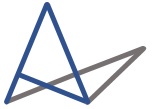A pipe dream years ago, ‘Private LTE’ is growing in utility circles and a buzz at the #Distributech conference I attended in February 2019.
Utilities have a range of current and emerging use cases and smart grid applications to meet customer service objectives and to remain relevant with new services.
These needs are currently enabled by ‘stacking’ private, proprietary narrowband wireless networks for priority ‘mission critical’ voice and data services, and complementing with commercial telecommunications carrier services.
If all of these services are aggregated, including Push-to-Talk’ voice and smart metering, an upgradable industry-standard wireless broadband solution can meet the needs of tomorrow.
The solution would be designed and operated to meet the reliability and security requirements of the most demanding ‘mission critical’ utility use cases.
However, this is contingent on access to valuable spectrum.
US emergency services with similar ‘mission critical’ reliability and security needs are migrating to ‘FirstNet’ mobile broadband, on federal provision of 700 MHz spectrum.
Investor-owned Utilities (IOU) do not (and in my opinion should not) have such a luxury.
Licensed spectrum can be acquired in competition with telcos; an expensive proposition. As such, the telecommunications industry has progressed technology to manage the precious spectrum asset including roaming, carrier aggregation, network slicing, spectrum arbitrage, prioritization, preemption and Virtual Network Operator (VNO).
Any IOU submission to a regulator for capital recovery for a broadband spectrum and network is likely (and rightly so) to raise red flags.
Forward-thinking utilities can demonstrate prudency and sweeten the deal by bringing telcos millions of subscribers and offsetting the cost by bartering access to their valuable Transmission and Distribution assets: overhead structures, conduit, easements and land.
To summarize, is there a telecommunications platform available to enable the smart grid?
- Yes! Access to a industry-standard wireless, mobile broadband technology can meet all utility requirements
- Yes! The telecommunications solution can be designed to meet stringent ‘mission critical’ reliability and security needs, while sharing valuable spectrum
- Yes! With collaboration, asset arbitrage and/or recycling, broadband solutions and services can be accessed at a lower TCO (compared to today’s suite)
- But no, the ownership model does not need to be private.
And this, for utilities, will be a new world of IT/OT convergence….
Service management rather than asset management!
Please leave a comment, share or connect, I’d be interested in your thoughts.
